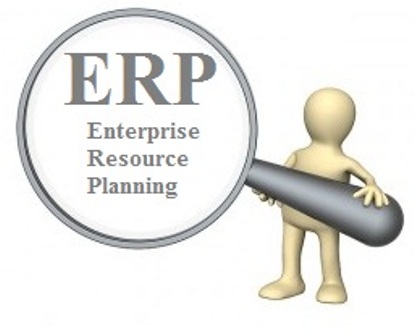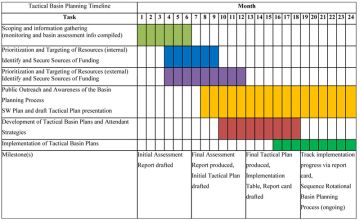What is a Divestiture in Business?

In the past sixty years, corporations like JP Morgan, Vodafone, and Texaco have increased sales and profits by investing in their companies through mergers and acquisitions. But, like when you break an old toy and get a new one, sometimes companies need to divest themselves of their less successful investments.
Learn more about business divestiture, its types, and what is involved in the following article.
[hr]
What is a Business Divestiture?
A business divestiture (or divestment) is a type of corporate action where the company sells off a subsidiary, business unit, or asset to another organization. It means eliminating business assets, including product lines, services, subsidiaries, business property, or an entire business.
Divesting offers the potential: to raise needed funds, reduce waste, and create a lean company with better performance in the future.
In a corporate divestment, the selling company sells assets to another company in a private sale. It can also be sold to the public through an initial public offering (IPO). The company that buys the assets may be an existing business or a new venture.
Divestitures are common in the telecommunications, pharmaceutical, IT, and pipeline industries.
Examples of companies that have divested include:
- IBM sold its personal computer division to Lenovo in 2005.
- AT&T’s sale of its stake in NCR Corporation in 1991.
- Bell Canada’s sale of NorthernTel, Yukon Tel, and Northwestel to TELUS Communications in 2000.
- General Electric divested its investment in NBC (National Broadcasting Company) to General Electric’s NBC Universal unit in 2009.
- Citigroup sold its international slot machine business to International Game Technology in 2005.
[hr]
Types of Business Divestment
The divestiture may be voluntary or involuntary.
A voluntary divestiture can occur due to management’s desire to cut costs and increase profit margins. The management team may feel it is necessary to sell off a business unit or an entire business to generate capital.
Besides, transferring a business unit or an asset may result in the company wanting to regain control or ownership of the business and reduce its tax liabilities.
A forced or involuntary divestiture is the result of regulatory or corporate action. For example, the company may be forced to sell off a subsidiary due to anti-trust action, or it may decide to divest itself of a business that a scandal damaged. The result is that everyone loses.
The business owner has lost much money, the shareholders lose their investment, and government regulators lose tax revenues. As a result, companies often take such actions to avoid financial distress and the exercise or threat of legal action.
[hr]
How Does a Business Divestiture Work?
When a business has an asset that is not producing enough or not at all, it is time to consider whether or not it is still an asset. Often, upon examination, it is determined to be a liability. When this occurs, some decisions must be made, like these:
- Do you continue to throw money into the former asset, hoping to turn it around?
- Can you find a reasonable solution for receiving some value from it by selling it?
The adverse outcomes of the conversation are as expected: efforts to find solutions or sell involve more funding.
A business divestment removes a product, for example, by eliminating the product’s manufacturing or the product line. This elimination removes the costs for manufacturing, marketing, shipping, and inventory costs associated with a product that has become a liability on the books.
How can product divesting become positive in this scenario?
Divesting the product, while appearing to be a loss, becomes a net benefit after the accounting is completed. This is because the time spent on product development, the resources taken to build and sell this product, and the multiple personnel needed to maintain the product, have all been factored into the equation, and the loss has been contained.
This move allows the business to position funding into profitable products with a projected future of growth. Such a move results in positives across the board as the bottom line shifts, adding shareholder value.
Business divestiture decisions can examine the positives and the negatives and make informed decisions rather than viewing divestiture as a negative. Further, divestitures should enter any conversations of assets vs. liabilities as part of the financial planning process.
[hr]
What Role does a Divestiture Advisory Group Play?
Corporate divestitures can be highly complex and risky, often resulting in legal and tax-related disputes.
That’s why companies of all sizes use divestiture advisory services to get professional assistance in selling a core business unit or division or removing assets to focus resources on opportunities better positioned for growth.
A proper divestiture strategy includes a focused and efficient process with an optimal transactional outcome. During a long and often-complex process, the advisory group will minimize business disruptions, helping to ensure the execution of divestiture is understood and embraced by the company employees.
Divestiture advisory groups assist in three key areas:
- discovery,
- documentation,
- the final deal-making.
In each of these areas, the advisory group will oversee specifics of the divestiture, including interviewing company management, performing due diligence, offering valuations, and developing a strategic selling memorandum and marketing materials.
In addition, advisory groups will prepare a qualified list of potential buyers and oversee the deal-making.
[hr]
What are the Reasons for Business Divestiture?
Ordinary business decisions involve divestiture, especially among businesses with several divisions and complex product lines.
Some of the most common reasons for divestiture include the following:
- Improving Cash Flow. The most common reason to divest an asset is the need for an improved cash flow. A business might sell a little-used factory or an underperforming product line to solve a cash flow problem.
- Selling subsidiaries. Smaller businesses integrated into more giant corporations may be sold or spun off for various reasons. If a subsidiary performs differently than expected or has moved to another product manufacturing line than the one intended, the best choice is to sell or spin it off.
- Selling underperforming assets. This is a common type of business divestiture. A typical underperforming asset is a product or service that isn’t performing well. The sale allows the business to receive a cash infusion supporting the products performing well, with other profitable results.
- Bankruptcy. Businesses in the bankruptcy process will typically sell all or part of the business as part of the process.
- Business sale. Business divestiture can include a privately-held business sale because the owners or shareholders have decided to quit.
Although divestiture has frequently been viewed as a negative, several compelling and positive reasons exist. A business can conduct a divestiture with a minimum of stress and hard work by utilizing the strategic resources of a divestiture advisory group.











